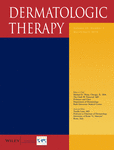The unwelcome trio: HIV plus cutaneous and visceral leishmaniasis
ABSTRACT
Leishmania/Human Immunodeficiency Virus (HIV) coinfection has emerged as an extremely serious and increasingly frequent health problem in the last decades. Considering the insidious and not typical clinical picture in presence of immunosuppressive conditions, the increasing number of people travelling in endemic zones, the ability to survive, within both human and vector bodies, of the parasite, clinicians and dermatologists as the first line should be aware of these kind of “pathologic alliances,” to avoid delayed diagnosis and treatment. In this setting, the occurrence of cutaneous lesions can, paradoxically, aid the physician in recognition and approaching the correct staging and management of the two (or three) diseases. Treatment of these unwelcome synergies is a challenge: apart from the recommended anti-retroviral protocols, different anti-leishmanial drugs have been widely used, according with the standard guidelines for visceral leishmaniasis (VL), with no successful treatment regimen still been established.




